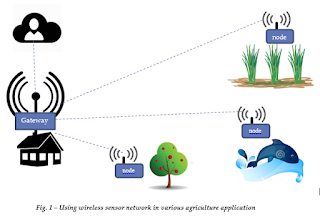Overview and Architecture of Wireless Sensor Network System (WSN)
We are going to build a system that consists of two main components which are a gateway and sensor nodes. The sensor nodes collect environmental parameters, then send data to the gateway via WiFi connection.
- For gateway: Gateway will be responsible for establishing WiFi connection, receiving data from sensor nodes and publishing data to the cloud.
We are going to use Raspberry Pi 2 as the hardware. It is one of the chip computers based module running Raspian OS. Raspberry Pi is compatible with Kura which is a Java/OSGI-based framework for IoT gateways. We use MQTT protocol for collecting sensor data and publish to the cloud. We install Mosquitto into the Raspberry Pi to create an MQTT broker for WSN. We use Bitreactive to develop a software (define MQTT broker and topics; publish and subscribe; package data,... ) that will be integrated into Kura.
- For Sensor nodes: Each sensor node will be designed to connect to sensors, such as temperature, pH, DO,... It also equips with WiFi module to send data to the gateway.
- For the Cloud: the Cloud platform receives, visualizes data from the gateway and stores data in a database.
- For testing: we will publish data from the gateway to the Thingspeak platform.
We also plan to use Kapua - a modular IoT cloud platform to manage and integrate devices and their data.
Above is the System overview.
Any comments and suggestions are welcome,
Tien Cao-hoang,



Comments
Post a Comment